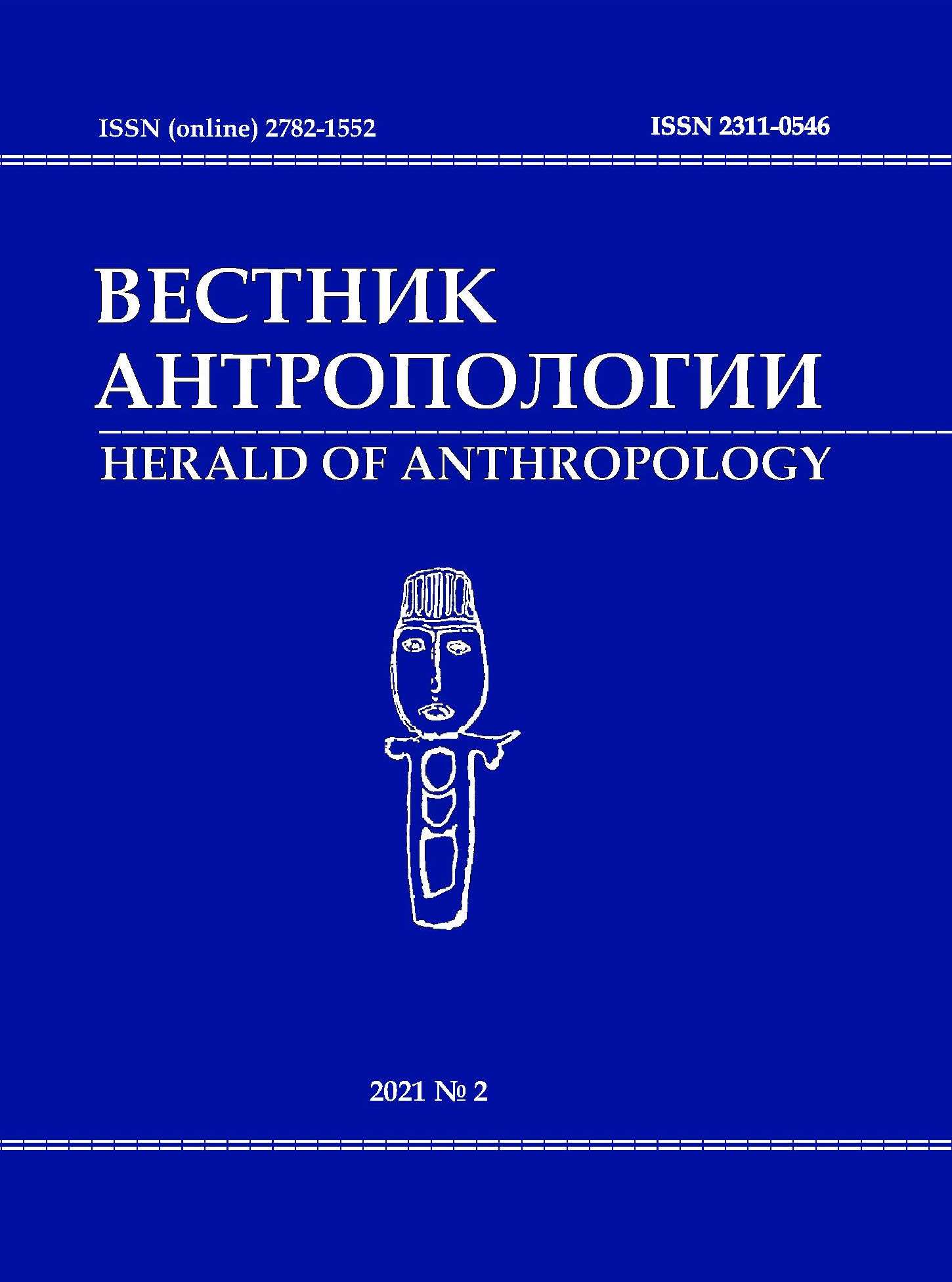«Ethnic» migrations: a historical and demographic research of the Buryat people
DOI: 10.33876/2311-0546/2021-54-2/214-229
Keywords:
ethnic migrations, ethnical demography, the Buryats, the Republic of Buryatia, Irkutsk region, Chita region, demographic transitionAbstract
The paper studies migration patterns of the Buryat people in the areas with dense Buryat population in 1959–1989. The sources and methods of studying ethnic migrations are analyzed. The territorial specifics of movements of the Buryat population in the context of migration trends in Russia in general and in the Eastern regions in particular are examined. Net migration rate in the Irkutsk and Chita regions and the Buryat ASSR was calculated. Historical conditions, factors and geographical directions of migration, and the role of rural-urban movements were identified. It was revealed that the Buryats of the Irkutsk region had the highest mobility, due to close contacts with the Russian population, intensive agricultural and industrial development of the region, which is why the migration outflow from the region dramatically increased. At first, most migrations were within the studied areas, but then the role of economic movements gradually increased, and the role of the Buryat ASSR as a center of attraction weakened. During the entire period under review, the Buryats of the BASSR had a positive net migration rate due to inflows from the Baikal region and the Chita region. The migration mobility of this ethnic group was significantly lower than in the Irkutsk region, and the rural-urban migration rate was low due to relatively slow economic development and less contacts with the Russian population. At the same time, the influx of Buryat population to the Republic in the studied period consistently decreased. In the Chita region, the demographic transition of the Buryat population was slower than in other regions under consideration. The region has historically had the lowest industrial production growth rates, and the agricultural migrations were less intensive. As a result, the Buryats of the Chita region had long maintained traditional economies, the share of urban residents was low, and Russian language use was not widespread. The mobility of the Buryats increased in the 1970s, and migrations were mainly directed to the BASSR. The role of the Republic as a destination for migrant flows only declined in the 1980s.
For citation: Dashinamzhilov, O.B., and V.V. Lygdenova 2021. «Ethnic» migrations: a historical and demographic research of the Buryat people. Herald of Anthropology (Vestnik Antropologii) 2: 214–229.
References
- Asalkhanov, I.A. 1963. Sotsial'no-ekonomicheskoe razvitie Yugo-Vostochnoi Sibiri vo vtoroi polovine XIX v. [Socio-economic development of South-Eastern Siberia in the second half of the XIX century]. Ulan-Ude: Buriatskoe knizhnoe izdatel'stvo.
- Bazarov, B.V., ed. 2011. Istoriia Buriatii [History of Buryatia]. Vol. 3. XX–XXI vv. Ulan-Ude: Izdatel'stvo BNTs SO RAN.
- Dashinamzhilov, O.B. 2018. Gorodskoe naselenie Zapadnoi Sibiri v 1960–1980-e gody: Istoriko-demograficheskoe issledovanie [Urban population of Western Siberia in the 1960s and 1980s: a Historical and demographic study]. Novosibirsk: Nauka, Izdatel'stvo SO RAN.
- Gordeev, N.V., ed. 2007. Ocherki istorii Vostochnogo Zabaikal'ia. Chitinskaia oblast' [Essays on the history of Eastern Transbaikalia. Chita region]. Vol. 2. Chita: Ekspress-izdatel'stvo.
- Kudriavtsev, F.A. 1940. Istoriia buriat-mongol'skogo naroda ot XVII v. do 60-kh gg. XIX v. Ocherki [History of the Buryat-Mongol people from the XVII century to the 60s of the XIX century. Essays]. Moscow; Leningrad: AN SSSR.
- Lygdenova, V.V., Dashinamzhilov, O.B. 2020. Regional'nye aspekty demograficheskoi modernizatsii buriatskogo naseleniia na primere Irkutskoi i Chitinskoi oblastei vo vtoroi polovine XX – nachale XXI vv. [Regional aspects of demographic modernization of the Buryat population on the example of Irkutsk and Chita regions in the second half of the XX-early XXI centuries]. Vestnik antropologii 2: 241–254.
- Sanzhieva, T.E. 2011. Migratsii buriat v period prisoedineniia k Rossii [Migration of Buryats during the period of joining Russia]. Vestnik Buriatskogo gosudarstvennogo universiteta 7: 10–14.
- Tsykunov, G.A. 1991. Angaro-Eniseiskie TPK: problemy i opyt (istoricheskii aspekt) [Angara-Yenisei TPC: problems and experience (historical aspect)]. Irkutsk: Izdatel'stvo irkutskogo universiteta.
- Zaslavskaia, T.I., ed. 1987. Sotsial'no-ekonomicheskoe razvitie sibirskogo sela [Socio-economic development of the Siberian village]. Novosibirsk: Nauka.





















